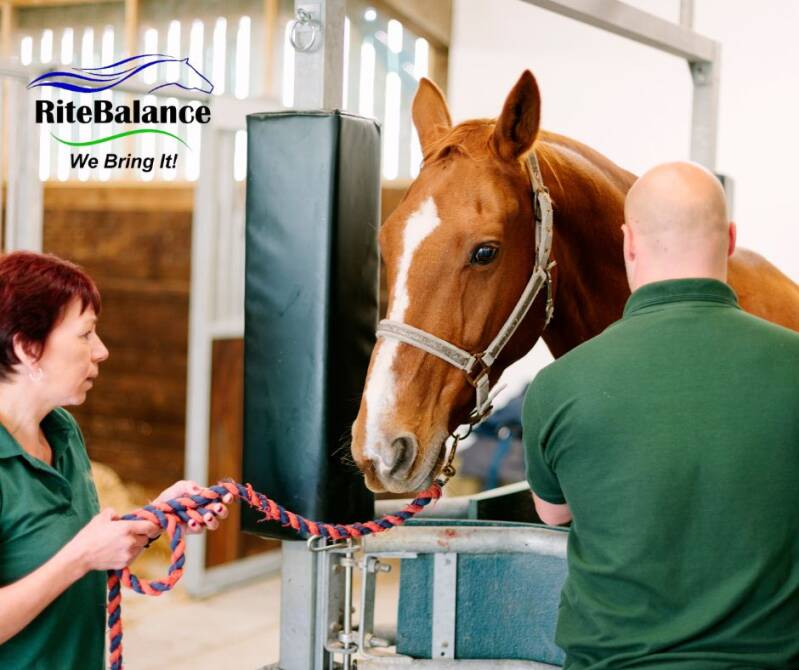
If you’ve ever searched for advice on Equine Protozoal Myeloencephalitis (EPM) online, you’ve likely noticed one thing: no two answers are alike. A seemingly simple question can generate dozens of conflicting recommendations, leaving you wondering, “Am I doing the right thing?” or “Am I about to embark down a serious rabbit hole?” The answer? Most definitely the latter.
As someone who has successfully recovered more than one horse from EPM and worked with many others, I want to share a practical, evidence-based perspective on treatment, supplementation, and rehabilitation.
Treatment Options
There are several FDA-approved options:
-
Marquis (ponazuril)
-
Protazil pellets (diclazuril)
-
ReBalance (pyrimethamine + sulfadiazine)
Successful treatment is usually defined as an improvement of at least one grade on a six-point neurological scale. This can be adequate for mild cases but may be less ideal for horses with more severe neurological deficits. Relapse rates vary, with ReBalance showing the highest risk despite being less expensive; however, its several-month treatment duration can offset the cost advantage. Marquis is generally the most expensive, with Protazil close behind, but no treatment guarantees a full recovery.
There are also non-FDA-approved compounded treatments, which vary widely in effectiveness. Examples include:
-
Toltrazuril + DMSO: Affordable and commonly used if your vet can prescribe it.
-
Decoquinate + Levamisole: Gaining popularity as a relatively low-cost and effective treatment alternative.
The key takeaway: there is no one-size-fits-all EPM treatment. Early detection and aggressive treatment significantly improve the chances of success.
Vitamin E Supplementation
High-dose vitamin E recommendations (e.g., 10,000 IU) are outdated and unsupported by peer-reviewed research. Excessive supplementation may even carry long-term risks.
Best practice:
-
Test your horse’s baseline vitamin E blood levels before supplementing.
-
Use natural vitamin E (d-alpha tocopherol) forms.
-
For horses on the low end of normal, consider water-soluble or nano-dispersed vitamin E, which raises blood levels quickly. Examples include:
-
KER Nano-E
-
KEP Elevate WS (NOT maintenance form)
-
Stuart Products Emcelle Tocopherol – often the most affordable
-
- After 3-4 weeks of supplementation, retest to confirm that the treatment dose is working and to see whether modifications to dosage rate are warranted.
Once your horse reaches consistent maintenance levels, you can switch to a more economical natural form at recommended levels.
Remember: not all EPM horses need 10,000 IU daily—this is a myth.
For current research on vitamin E, see work by Dr. Carrie Finno at UC Davis.
EPM Supplements
The supplement market is saturated, with products claiming miraculous effects, including:
-
MVP-E-clipse
-
EPM Super Dewormer
-
Immubiome mushroom supplements
-
Various CEP products
Most of these DO NOT live up to their promises, and chasing the “perfect” supplement can become costly without guaranteed results.
Diet
A “special diet” is not required for recovery. Avoid being persuaded to eliminate commercial feeds entirely or use multiple expensive supplements unnecessarily.
Focus on a well-balanced diet:
- Free-choice grass and hay
-
High-quality commercially fortified feed
-
Maintenance dose of natural vitamin E
-
Pre, pro, & postbiotics to support gut microflora
If you’re unsure whether your horse’s diet is adequate, consult a qualified equine nutritionist or nutrition consultant rather than unverified online advice.
Rehabilitation
Supplements and medications alone cannot repair nervous system damage. Rehab work is essential:
-
Groundwork and under-saddle exercises tailored to address weakness
-
Biomechanics professionals can help correct imbalances and improve performance
This was one of the most effective investments in my horse’s recovery, second only to appropriate treatment.
Gut Health
EPM medications can stress the gut. A compromised gut may contribute to the development of active EPM. Addressing gut health—including ulcers, dysbiosis, or leaky gut—alongside effective treatment appears critical for recovery.
Final Thoughts
-
Do your homework. Research EPM thoroughly using peer-reviewed sources like Google Scholar.
-
Be cautious of social media advice and “miracle cures.”
-
Vet any recommendations, especially from product sellers or those with conflicts of interest.
EPM recovery is complex, and no single treatment, supplement, or diet plan works for every horse. But with informed decisions, early treatment, balanced nutrition, and proper rehabilitation, your horse has the best chance at a full, functional recovery.


Add comment
Comments